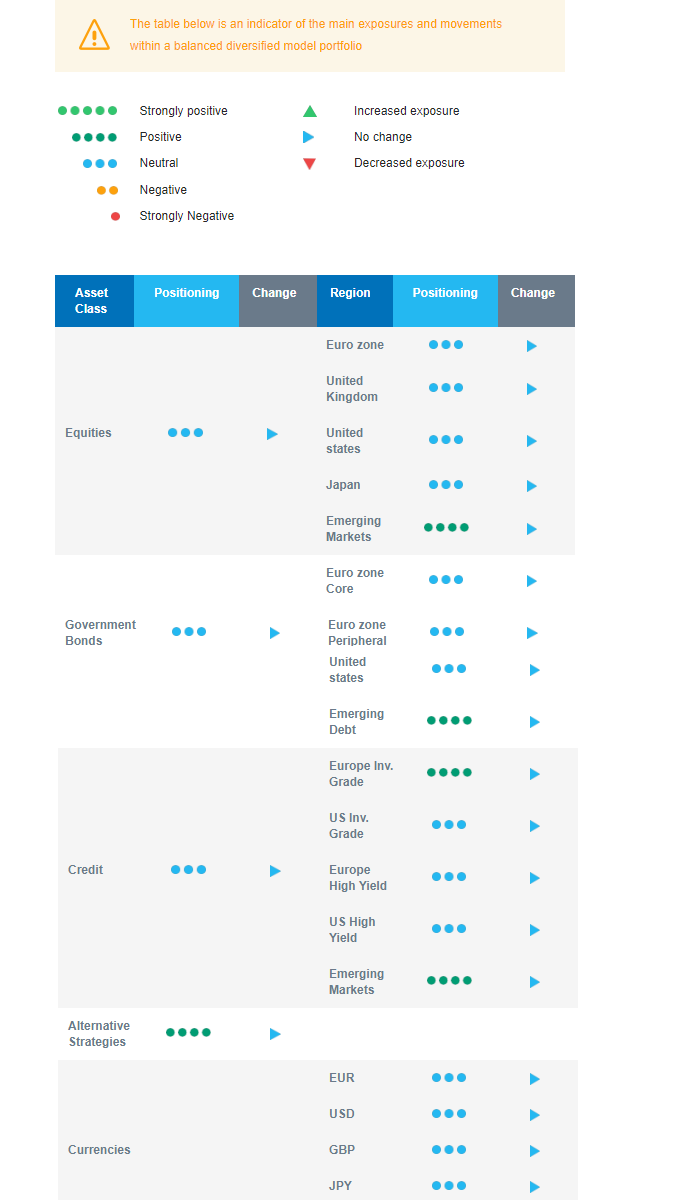Last week in a nutshell
- US jobs report showed labour market conditions remain tight with another decent gain in nonfarm payrolls of +236k in March (vs. +230k expected) and the unemployment rate back a tenth to 3.5% (vs. 3.6% expected).
- PMIs revealed a contraction in manufacturing activity in the euro zone and the US while services accelerated above expectations in China.
- OPEC+ announced a large output cut starting in May. The White House quickly disapproved, due to the anticipated inflationary effects.
- ECB’s Consumer Expectations Survey for February showed falling inflation expectations to their lowest level in a year.
What’s next?
- With job opening easing, data on inflation will enhance the picture on the growth outlook as investors assess the odds of a recession and the upcoming monetary policy path. The FOMC minutes are also due.
- The University of Michigan will release preliminary data on consumer sentiment, consumer expectations and current conditions shedding some light on how the American consumer is faring so far.
- China will publish a series of data on its balance of trade, imports and exports growth as the re-opening is on-going, supported by fiscal and monetary measures.
- The Q1 2023 earnings season kicks off with major US banks after the recent turbulence in the banking system.
Investment convictions
Core scenario
- Uncertainties on US and European financials have replaced the better outlook on economic growth in investor’s minds. Empirical evidence reminds us that financial stress is part of tightening cycles, and central banks will adjust their monetary tightening to financial developments.
- We acknowledge that the risk of a more adverse outcome than our soft-landing scenario has increased as financial conditions have been tightening. The temporarily high uncertainty surrounding the banking sector is a testimony to the difficult trade-off in ensuring both financial stability and price stability.
- Considering both upside and downside risks in a rather binary situation, we stand ready to reduce risk in the case of complacent financial markets. On the other hand, a pronounced market sell-off would likely open new investment opportunities in the medium term.
- Credit remains a strong conviction for the start of 2023 since the carry that was reconstituted by the rise in yields in 2022 looks attractive. We are overweight Credit, including Emerging market debt.
- We expect emerging markets equities to outperform as valuation is relatively more attractive while Asia keeps superior long-term growth prospects vs. developed markets, given that China’s re-opening is very quick.
- In Europe, sentiment, labour market and consumption are holding up. With the re-opening of China, the region should likely resume its export growth.
- On a medium-term horizon, we expect Alternative investments to perform well.
Risks
- Financial stability risks have resurfaced recently and led the US to add liquidity into the financial system.
- The uncertainty linked to the financial shock and the potential credit restrictions along with central bank’s anti-inflation stance are capping the upside potential for risky assets.
- On the other hand, inflation is declining, and a slow but positive growth is limiting the market downside.
- As central banks become more data dependent, and the economy is still surprising on the upside, monetary policy could become more restrictive on both sides of the Atlantic.
- Among the upside risks, the Chinese re-opening is good news for domestic and global growth as long as there is no inflation spill over via a resurgence of commodity prices in the context of constrained supply.
Cross asset strategy
- Motivated by a less attractive risk/reward and a binary outcome on the economy given recent financial turmoil, we keep the neutral stance on overall equities applied in February.
- Within a neutral equities vs bond positioning, we have convictions in specific assets:
- In terms of regions, we believe in Emerging markets, as valuation is relatively attractive and there is room for a catch-up vs. developed markets.
- In the current environment, we prefer defensive sectors, such as Health Care and Consumer Staples.
- The Health Care sector is expected to provide some stability: No negative impact from the war in Ukraine, defensive qualities, low economic dependence, innovation, and attractive valuations.
- In addition, the current context continues to favour companies with pricing power, which we find in the Consumer Staples segment.
- In the fixed income space, we currently have a neutral duration positioning as most asset classes have an attractive carry.
- European investment grade credit is one of our strongest convictions. We also have exposure to emerging debt.
- We have exposure to some commodities, including gold and commodity-related currencies, including the Canadian dollar.
- In our long-term thematics and trends allocation: We favour investment themes linked to the energy transition and keep Technology in our long-term convictions. We expect Automation and Robotisation to recover in 2023, and a growing interest in Climate and Circular Economy-linked sectors (such as Industrials and Technology).
Our Positioning
Our current positioning is neutral equities and neutral on bond duration, with a preference for Emerging markets, pending an appeasement of the banking stress or a true investors’ capitulation.
After the banking stress, large caps significantly outperformed small and mid-caps in March, creating a trading opportunity if the dust settles. We have a tactical exposure to US small and mid-caps to seize the opportunistic odds of a short term catch-up of this segment.
On the fixed income side, we have a constructive view on Investment Grade credit. In the context of robust growth and the reopening in China, we remain allocated to some commodities.

